Stepping inside an artifact: A visit to Gander International Airport

What do the Queen of England, Marilyn Monroe, and Fidel Castro have in common? They have all been guests of Gander, Newfoundland!
Many travellers today enjoy direct flights to Europe. But until the 1960s, such flights were not possible. Long before the tragic events of 9/11 and the runaway hit, Come From Away put Gander back on the map, the little town was home to one of the most important airports in the world — Gander International Airport.
Once a heavily-forested area known for great fishing and hunting, Gander’s level ground and proximity to the large and deep Gander Lake made it an ideal spot for an airport which could support both flying boats and landplanes coming across the Atlantic Ocean from Europe. The construction of the airport was completed on October 31, 1939. At the time, it was the largest airport in the world.
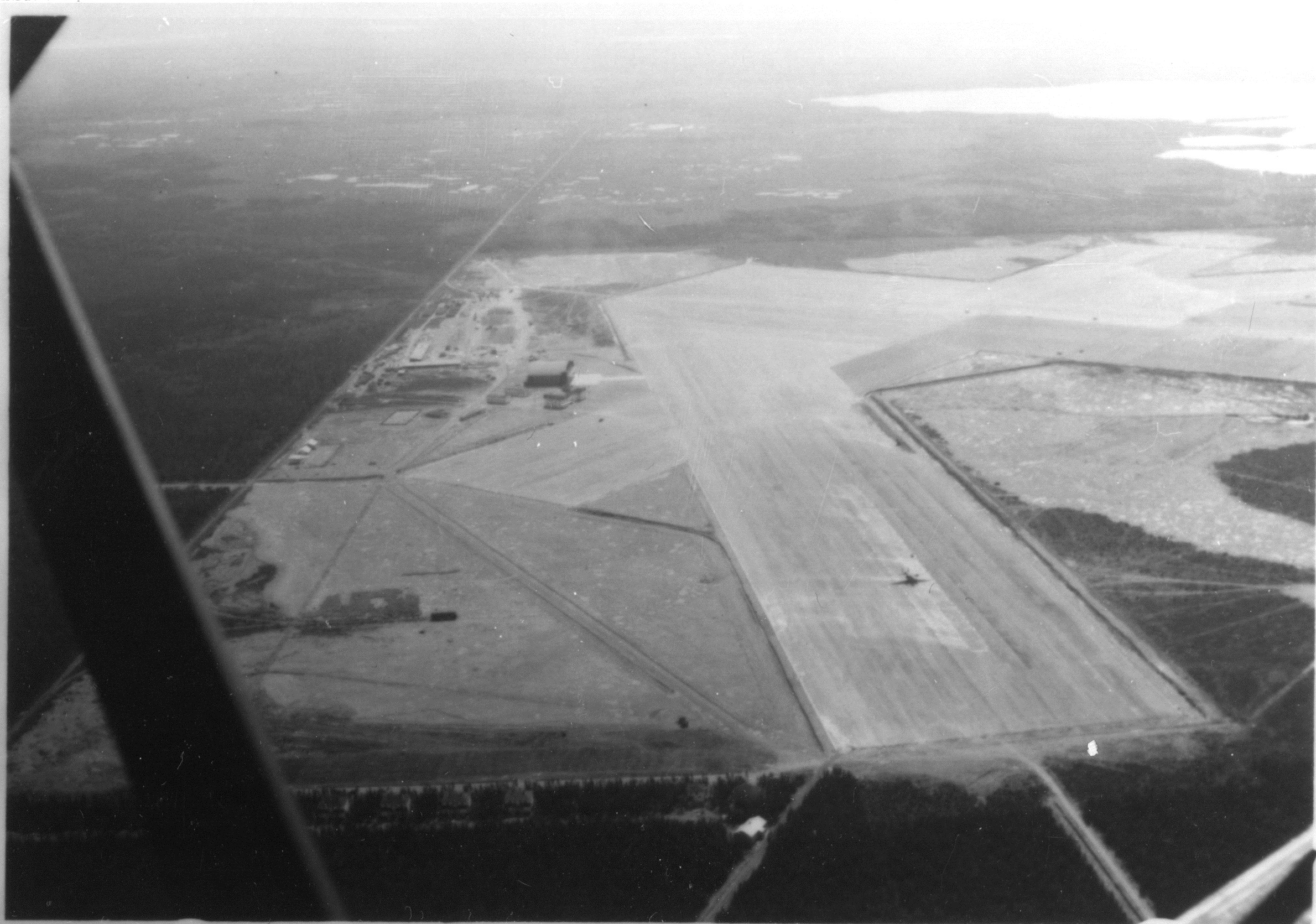
Gander Airport - 1938
The construction of the airport was completed on October 31, 1939. At the time, it was the largest airport in the world.
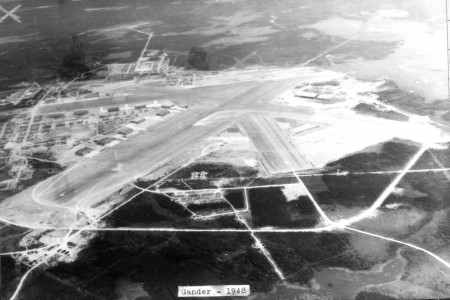
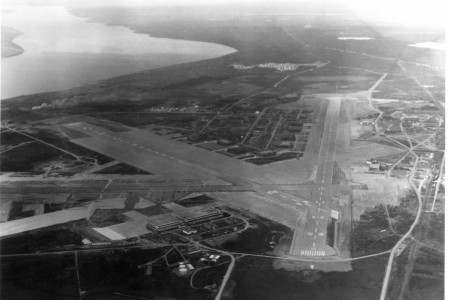
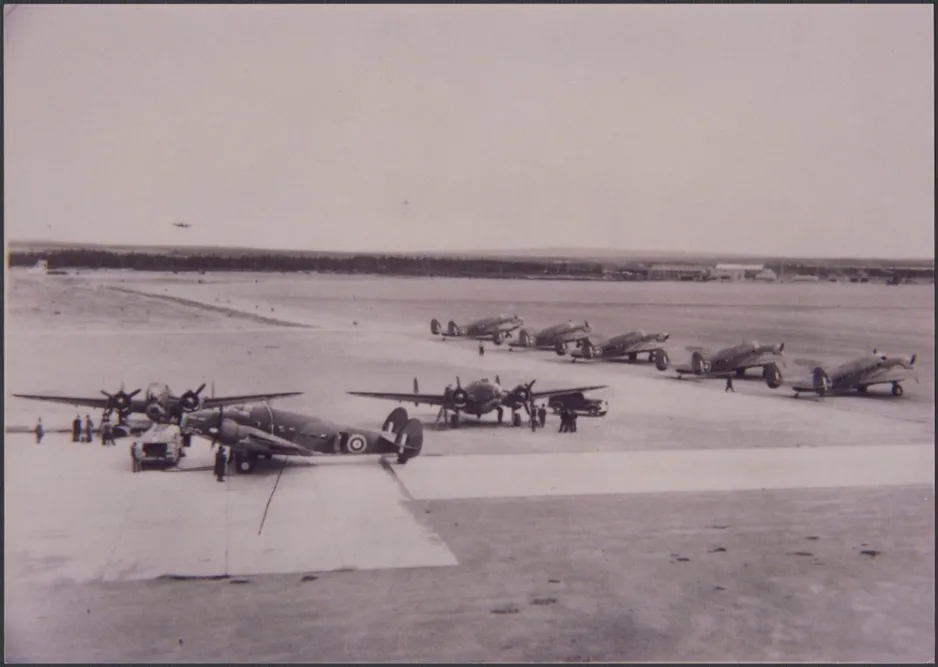
A group of Lockheed Hudson bombers at Gander Airport preparing for departure to England during the Second World War.
While it was certain that landplanes were the future of transatlantic travel, at the time, none could reliably make the journey across the Atlantic while carrying passengers and cargo. As such, the new airport couldn’t yet fulfill its intended purpose — at least from the civilian point of view. As the Second World War raged overseas, Gander was quickly recognized as a strategic location for airbases by military officials from the Canadian, British, and American governments. The airport became a centre for Ferry Command, an operation focused on ferrying bombers and other types of warplanes across the Atlantic to the UK.
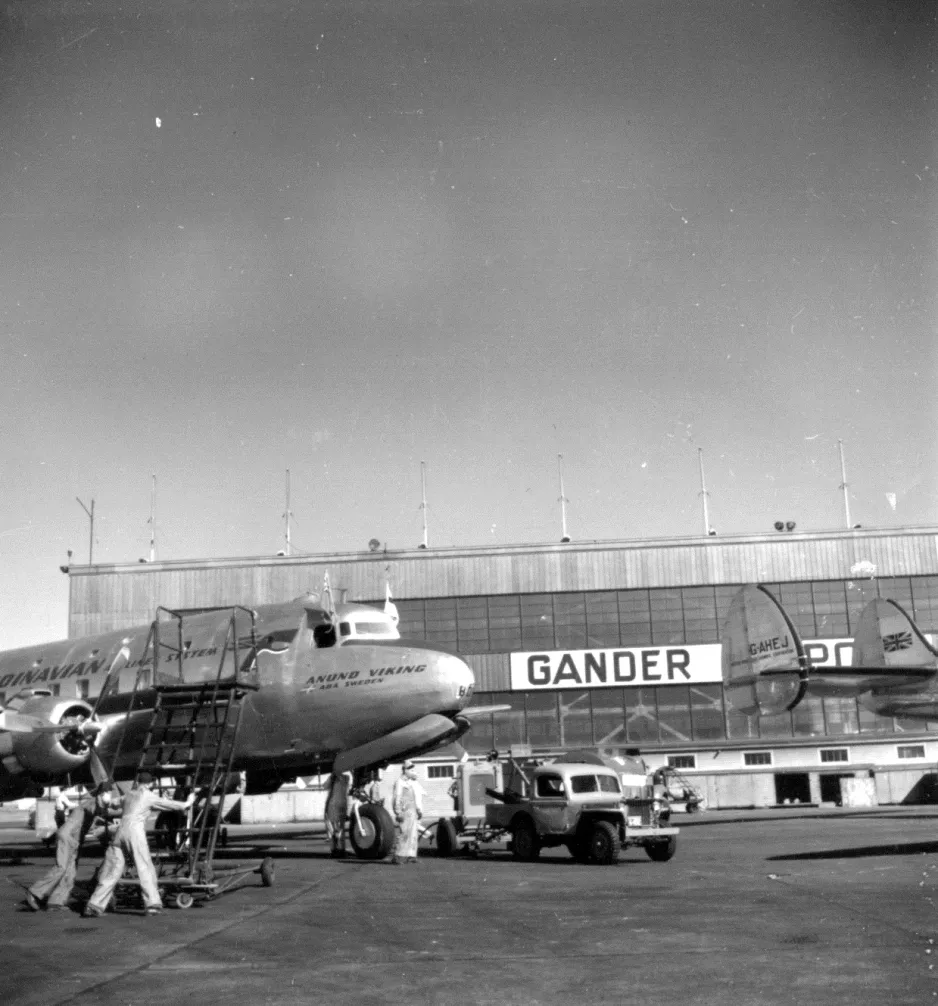
A Swedish airliner being serviced at the airport in 1948.
After the war, the boom in commercial air travel had a huge impact on Gander as nearly all commercial transatlantic traffic stopped there for refuelling. The terminal building featured a bar called the Big Dipper (the first 24-hour bar in Newfoundland), a gift shop, and a lunch counter for passengers waiting to board their airplanes for the next leg of their journey. By the end of 1946, the airport played host to approximately 1,000 passengers a day and served eight international airlines. Less than 10 years later, traffic increased to over 400 airplanes a day and around 11,000 passengers every week. The airport welcomed all kinds of VIPs and celebrities, from the Queen of Iran to Frank Sinatra to Albert Einstein. It was a place to see and be seen. It quite rightly became known as “The Crossroads of the World.”
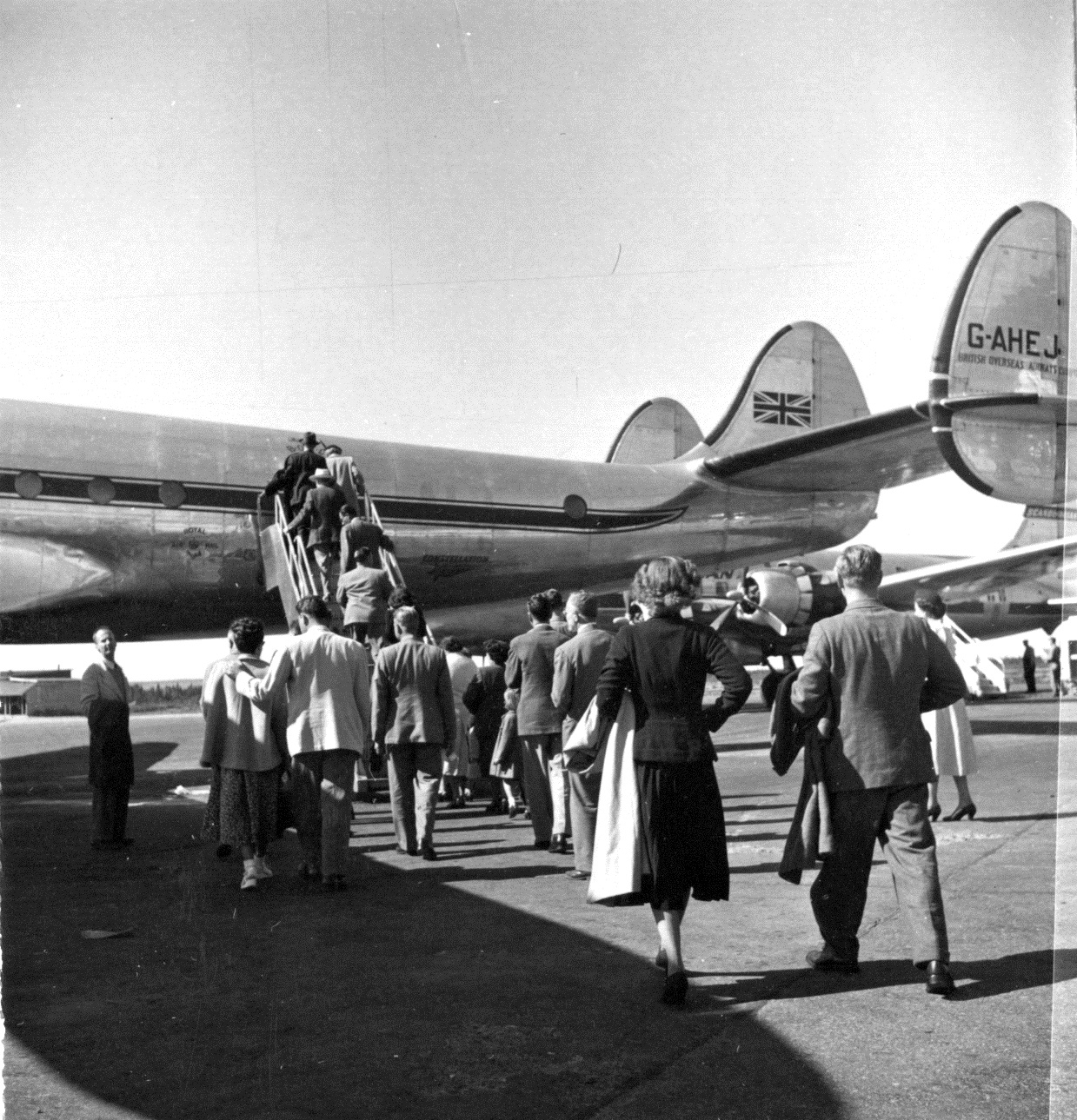
Passengers boarding a British airplane at Gander Airport.
The airport welcomed all kinds of VIPs and celebrities, from the Queen of Iran to Frank Sinatra to Albert Einstein. It was a place to see and be seen. It quite rightly became known as “The Crossroads of the World.”

People waiting in the international lounge of the new terminal. Artist Ken Lochhead’s impressive mural is visible in the background.
On June 19, 1959 — 60 years ago today — a brand-new jet age terminal opened at Gander International Airport. The guests of honour? None other than Queen Elizabeth II herself, along with her husband, the Duke of Edinburgh. The new terminal was defined by its Modernist style and avant-garde art, namely a 72-foot mural by Ken Lochhead called “Flight and its Allegories” and a sculpture by Arthur Price, called “Welcoming Birds.” It truly was the height of glamour in air travel but unfortunately, within only a couple of years, the stop-over for refueling in Gander became unnecessary. Jet airplanes with longer range began to fly direct routes from Europe to North American destinations like Montreal or New York. The Jet Age that held so much promise for the airport town quite literally passed it by, leaving the incredible new terminal frozen in time.
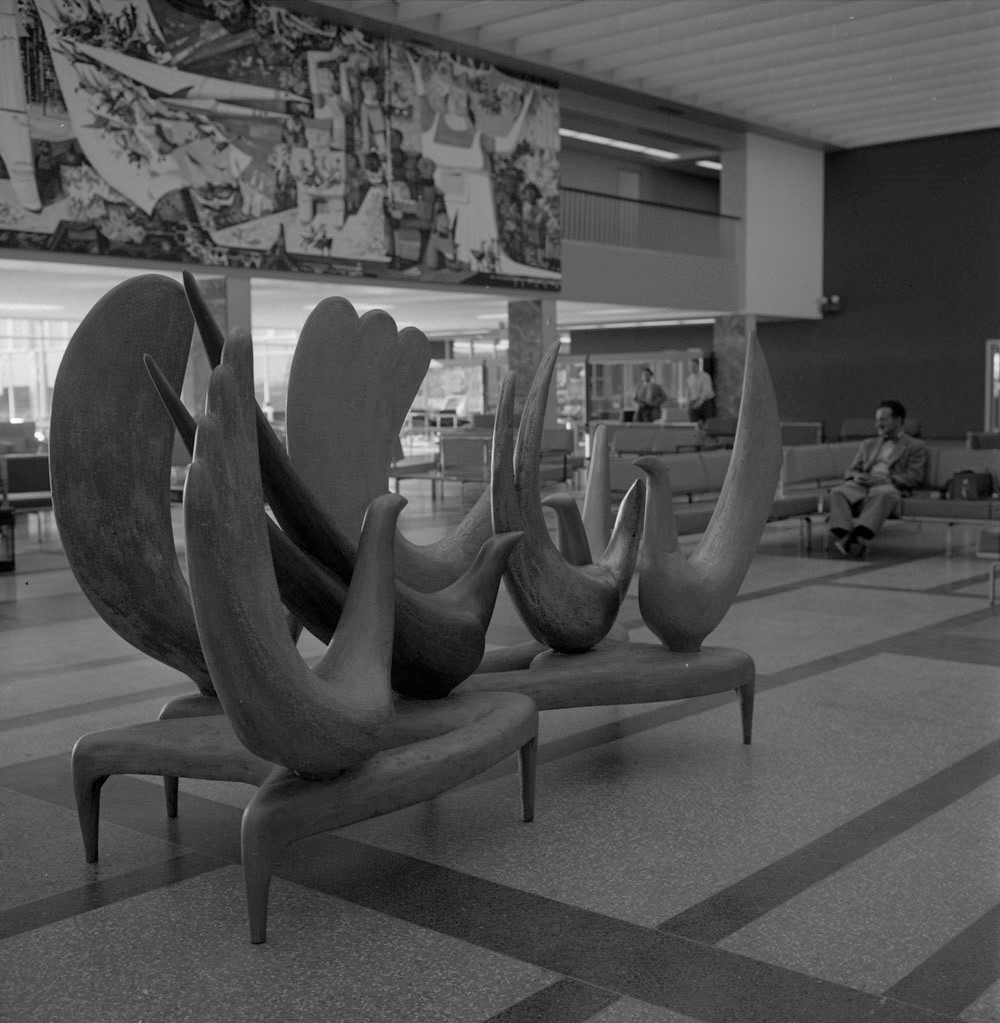
“Welcoming Birds” by Arthur Price — one of the many artworks commissioned by the Department of Transport for new terminal buildings across the country.
The artwork, the furniture, the famous clocks by the escalator — we were basically inside an artifact!
Last year, I heard that tours of the international terminal were sometimes offered. I got in touch with a lovely man named Jerry Cramm, airport commissionaire and guide extraordinaire, and he agreed to take my husband and me on a tour. It was incredible. The artwork, the furniture, the famous clocks by the escalator — we were basically inside an artifact! We visited the ladies washroom, which still features a very 1950s row of seats in front of a long mirror. There was also a small room for feeding babies, complete with the original wallpaper. It was very much like taking a step back in time.

Our wonderful guide, Jerry.
Jerry regaled us with many airport tales, from the Queen fixing her hair in the ladies room to showing us where all the aircraft had to park in the wake of 9/11. It was eerily quiet and empty. The three of us and our baby had the place to ourselves. Still, I could really imagine what it might’ve been like in the early 1960s — bustling with people from all over the world, caught up in the magic of air travel in the golden age of flight.
Today, few people know about Gander airport’s incredibly storied history. In addition to domestic flights, the airport is still used for cargo and military aircraft, and still sees around one or two international flights which need to make emergency landings for medical or mechanical reasons. The rise in business and private jet use has been good for the airport, with 20 percent of private jets flying across the North Atlantic stopping to refuel at Gander. Presumably, these refueling stops are far less glamourous than they used to be!


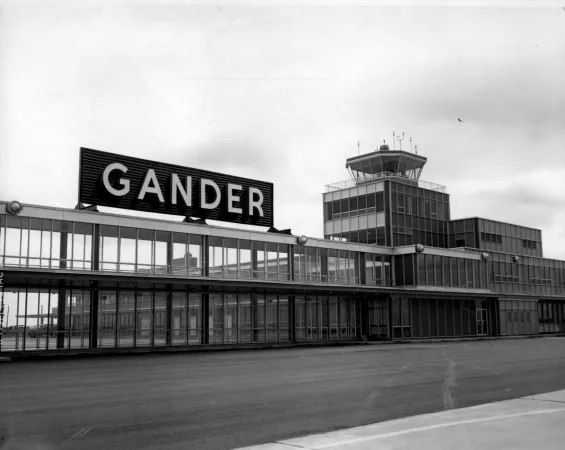
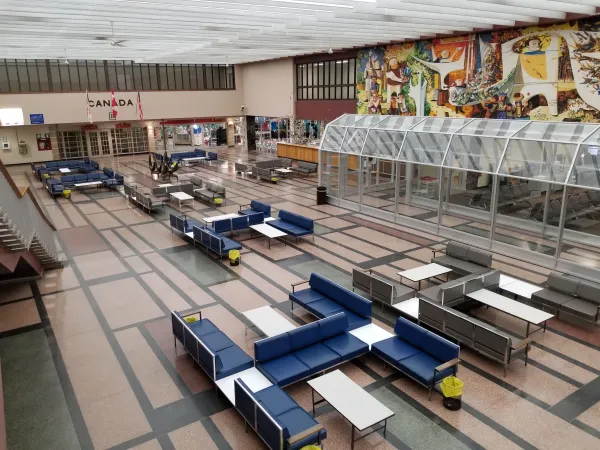
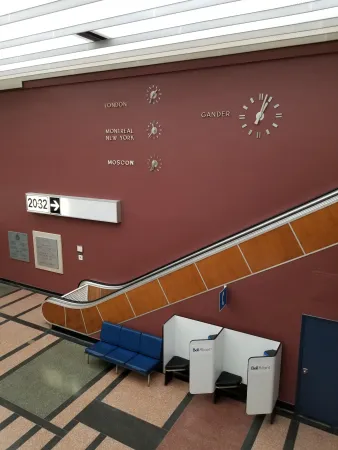
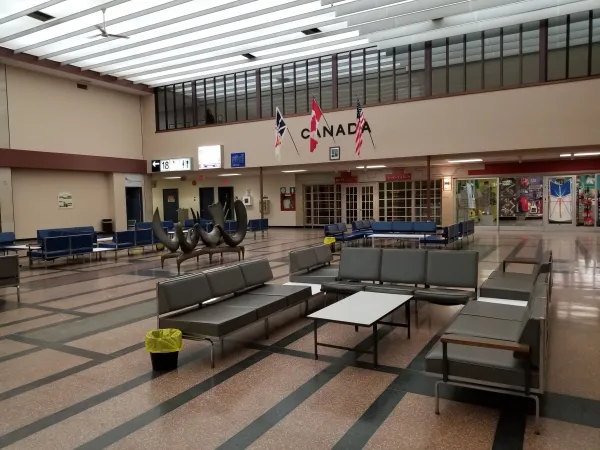





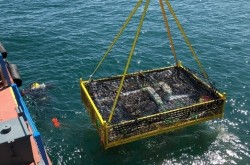




![A block of photographs showing some of the people involved in the bombing of beluga whales in the estuary and gulf of the St. Lawrence River. Anon., “La chasse aux marsouins [sic]. » Le Devoir, 15 August 1929, 6.](/sites/default/files/styles/thumbnail_7/public/2024-09/Le%20Devoir%2015%20aout%201929%20page%206.jpg?h=584f1d27&itok=TppdLItg)






